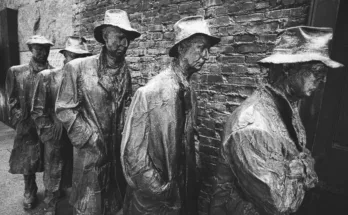One of the turning points in world history is called the American Revolution commonly referred to as U.S War of Independence and includes parting ways with dependency through a fight for freedom. This article attempts to address the chronological timeline of this major eight-year conflict, highlighting prominent events and their significance.
Prelude to the Revolution (1763-1775)
The aftermath of the French and Indian War
After the end of French and Indian War in 1763, British Empire was left with humongous debt. In retaliation, the British administration tried to recover its losses by introducing a number of taxes for American colonies.
Imposition of taxes by the British government
Legislation such as the Stamp Act 1765, Townshend acts of 1767 and Tea act inbuilt so much resentment among American colonists. These actions that are primarily seen as being oppressing and not fair generated sentiments of revolt and rebellion.
The Outbreak of War (1775)
Battles of Lexington and Concord
On April 19, 1775 tensions reached an explosive level at Lexington and Concord. British soldiers fought against American militiamen setting a spark for an open military confrontation, thus growing the revolutionary enthusiasm.
Start of armed conflict
The skirmishes at Lexington and Concord consolidated colonial oneness as well a determination to fight the British regime. The Battle of Lexington and Concord set in motion an exacerbation across the colonies, a cry for action that deployed revolutionary armies.

The Declaration of Independence (1776)
Issuance by the Second Continental Congress
With the increasing violence, in Philadelphia Second Continental Congress assembled and adopted Declaration of Independence on 4th July,1776. Thomas Jefferson had as its major author the declaration that addressed being projected, which stated actually why colonists’ grievances and rights to govern themselves.
Formal break from Great Britain
The Declaration of Independence severed political relations with British Crown at the same time accented a determination to establish an independent nation based on principles of freedom, equality and sovereignty.
The Turning Point (1777-1778)
The significance of the Battle of Saratoga
The decisive Battle of Saratoga in 1777 played a key role to victory over the British Army and put an end for Americas funding from France which not only opened new special dimensions on how should war be fought but also was crucial financial assistance empowering then Americans so strongly that they could win at revolt. One crucial element that was boosted by this decisive American victory is the restored confidence of people in their ability to win and hence shift the nature of fight into favor force revolutionaries.
The challenging winter at Valley Forge
In the cold winter of 1777-1778, Valley Forge tried to measure the strength and stamina displayed by members of each army. The only thing that changed with them was getting hardened and relentless in their mission because they had gone through very difficult times including low rations as well as inclement weather.
Victory at Yorktown (1781)
Major American triumph
In 1781, the Siege of Yorktown brought together American and French forces in a concerted effort which led to Cornwallis’s defeat. The surrender at Yorktown was a major turning point in the war, with the ultimate triumph of revolutionary cause hanging by a thread.
Surrender of General Cornwallis
The surrender of General Cornwallis and his British components at Yorktown on October 19, 1781 had embodied years of battle effort. The surrender made the end of British aspirations in America and consequently, gave birth to a new nation.
The Treaty of Paris (1783)
Official end of the war
On September 3,1783 by the Treaty of Paris-a document forming an end to war between Great Britain and United States. The treaty provided sovereign and independence of the United States, defining its territorial jurisdiction.
Recognition of American sovereignty
The Treaty of Paris recognized the Americans’ sovereignty over vast territories stretching from current Canada to Florida and westward on up to the Mississippi River, thereby endorsing a young nation into existence through its birth onto a world stage.

Conclusion
The American Revolution, which began in 1775 and ended with the Treaty of Paris signed on September 3rd, 1983 is a telling example of how tenacious spirit among people should be endeavoring to pursue freedom for they wish. The arduous fight for democracy resulted in the birth of a new nation – which was based on democratic ideals and principles that live to date.
FAQs
Q: What were the key reasons for this Revolution in America?
A: Moreover, the main motivations for the American Revolution were aversion to taxation without representation, limitations on colonial autonomy and perceived infringement of individual rights by British government.
Q: In what way did the Battle of Saratoga shape up in war’s aftermath?
A: The Battle of Saratoga turned out to be a decisive, American victory that convinced the French openly support the US cause by providing military aid as well as resources and reinforcement in naval forces.
Q: Who were such prominent people as George Washington and their roles in the Revolution?
A: Mere visionary leaders, such as George Washington helped in mobilizing colonial forces into position, leading strategically and pulling unity lines together between disparate factions with the final destination of revolutionary victory.
Q: Why was the Treaty of Paris so important to America?
A: The Treaty of Paris recognized the independence of the United States by ending British colonial authorities over them and carving out vast territorial bases for this nation as sovereign assertions.
Q: What role did the American Revolution play in inspiring other national liberation movements across the world?
A: The American Revolution became a symbol of hope and inspiration to the oppressed peoples all over in this world, awakening liberation and democratic movements across areas like Asia remained colonized for historical periods.




